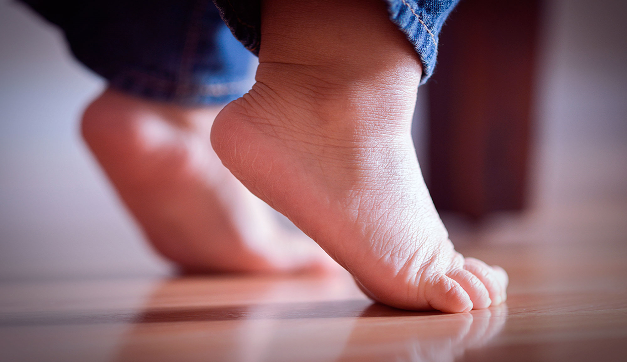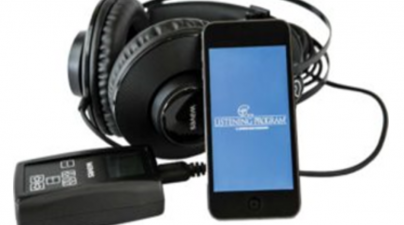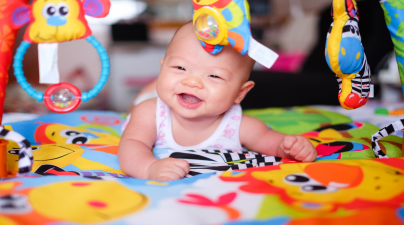-
20 November 2019
-
0 comments

Pediatric Toe-Walking:
What is it and What Can We Do About it?
What is Pediatric Toe-Walking?
Know The Facts:
- Toe-walking is defined as the absence or inability to obtain heel strike at initial contact and during the stance phase of the gait cycle.
- Variability in gait pattern during development is considered typical — (we actually test for it!) until the age of three years.
- A consistent toe-walking gait pattern after the age of three years is considered atypical and a physical therapist (PT) should be consulted at this time.
Why does my child toe-walk?
There are several reasons why your child may toe-walk. Many times, your child may be toe-walking due to the presence of a musculoskeletal or neurological condition. These diagnoses can include forms of Cerebral Palsy, Sensory Processing Disorder, Autism Spectrum Disorder, Muscular Dystrophy, or Spina Bifida. There is also a form of toe-walking that is performed in the absence of known musculoskeletal and neurological conditions, called Idiopathic Toe-Walking or ITW. Researchers do not know why children with ITW toe-walk at this time, but they continue to work towards these answers. Fun Fact: Thirty percent of children that demonstrate a consistent toe-walking pattern following 3 years of age demonstrate this pattern throughout their lifetime, with no functional impairments or complications.
Does it really matter if my child has a “bouncy” walk?
Yes and no. If they experience loss of balance, demonstrate decreased body and spatial awareness and show signs of orthopedic risk, then yes. Please consult a skilled physical therapist. If they are functional throughout their environment and demonstrate low risk for future orthopedic conditions, your child may be part of that 30% that continue toe-walking past age three. Please consult a skilled physical therapist to determine future orthopedic risk and pros/cons of treatment.
I made a physical therapy evaluation appointment for my child. What should I expect?
The PT will:
- Review birth, developmental, medical and familial history
- Measure your child’s ankle, knee and hip ranges of motion
- Observe your child’s gait pattern and degree of variability
- Test how your child’s muscles are working in conjunction with his/her other muscles
- Test how strong your child’s muscles are functionally and recreationally
- Educate you regarding findings and proposed treatment options based on such toe-walking classification your child falls into.
So what can we do about it?
Whether your child is a neurological/musculoskeletal toe-walker or an idiopathic toe-walker should be differentiated by a skilled physical therapist trained in this specialty, as an accurate diagnosis is vital for proper and appropriate treatment.
*Observe your child and answer these questions before coming to your PT appointment:
- Is your child over three years old? (If not, please wait until 3 years)
- Was there an injury at birth? Please bring any relevant birth and developmental history.
- How long has your child been walking on his/her toes?
- How often does your child walk on his or her toes? a)Percentage of a typical day? b) Does this pattern change on different surfaces/textures?
- Is your child able to correct to a heel-toe gait pattern when asked to?
- What (if any) have you tried in the past to correct the pattern?
- Have you noticed any functional challenges for your child secondary to the walking pattern used? a) Falls or loss of balance b) Pain or achy feet c) Orthopedic conditions
- Please come with any additional questions that you may have for the physical therapist evaluating your child. We are excited to meet you.
If you have questions regarding your child’s development. Please call us at 410-358-1997. For more info on Pediatric Physical Therapy click here
Share Social




